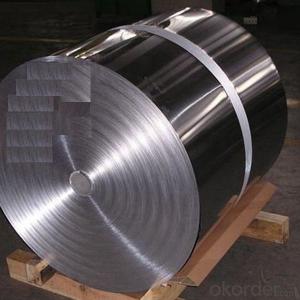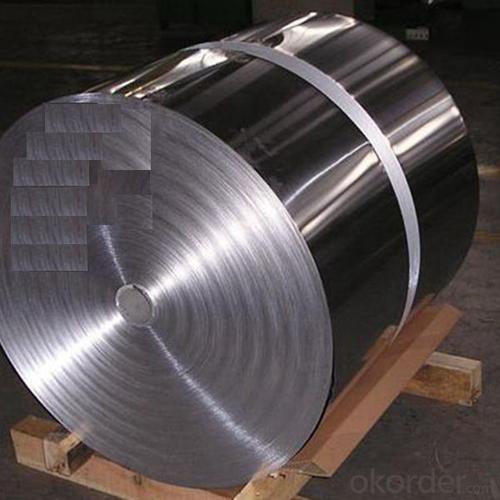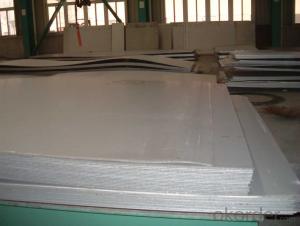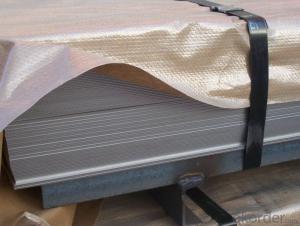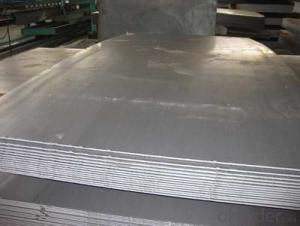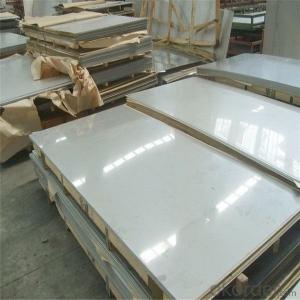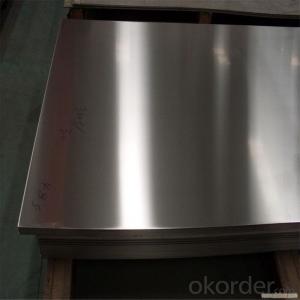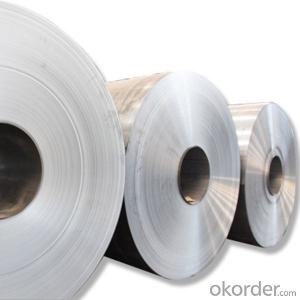Steel Stainless 304L From China, Cheap Price
- Loading Port:
- Tianjin
- Payment Terms:
- TT OR LC
- Min Order Qty:
- 25 m.t.
- Supply Capability:
- 25 m.t./month
OKorder Service Pledge
OKorder Financial Service
You Might Also Like
Specification
Products Description for Stainless Steel Coils/Sheets:
Product | stainless steel coils/plates/sheets | ||
Discharge Port | Any Port, China | ||
Size | Coils | Cold Rolled: | Thickness0.3-8mm,Width:280-2100mm |
Hot Rolled : | Thickness3-14mm,Width:650-2100mm | ||
Plates | Thickness2-80mm,Width:1500-3000mm | ||
Coil Weight | About 20 Tons | ||
Grade | 201,202,304/304L/304H,316/316L/316H,321/H,310S,409/L,430 etc. | ||
Technique | Hot Rolled/Cold Rolled | ||
Finish | 2B, BA, 2D, No1, No2, No4,NO.8,SB etc | ||
Edge | Mill Edge / Slitting Edge | ||
Package | In bundles, or as customer's requirement | ||
Place of Origin | Made in China | ||
MOQ | 20 Tons | ||
Packaging & Delivery for Stainless Steel Coils/Sheets:
Packaging Detail Standard export packing or following customer's demand
Delivery Time: Within 30-40 days after deposit or according to the order quantity
Details for the products:

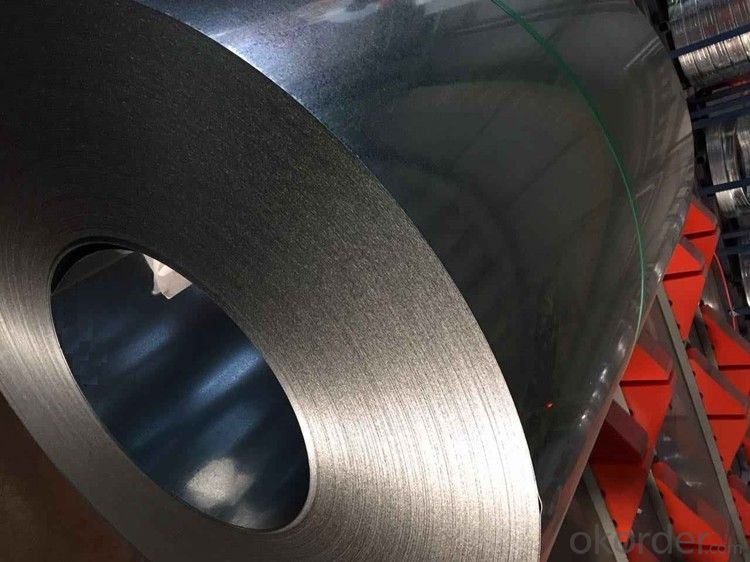
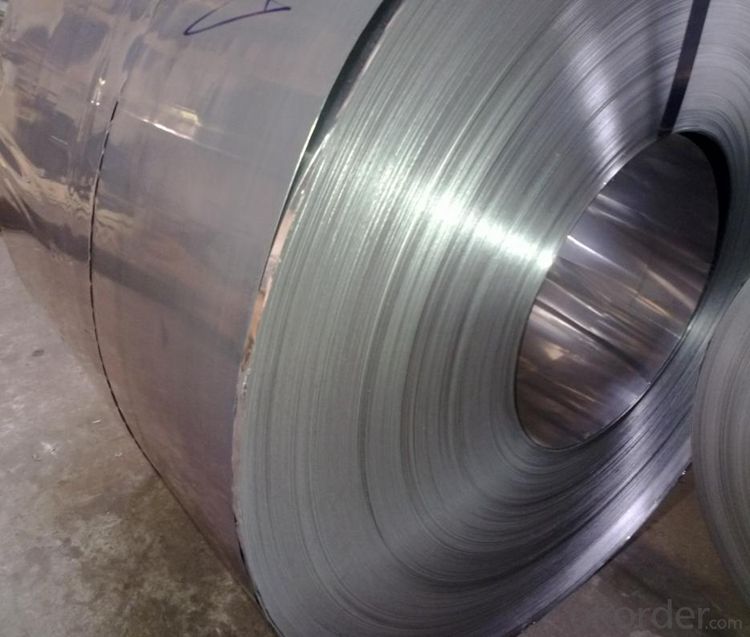
Features of Stainless Steel Coils
(1)Good ductility
(2)Good corrosion resistance
(3)Excellent abrasion resistance and fatigue strength
(4)Good weldability
(5)Oxidation resistant performance
(6)Excellent in high temperature
Our Service
1.High quanlity and reasonable price.
2.Customized on-demand.
3.Reasonable shipping and fast delivery.
4.Free sample.
FAQ for Stainless Steel Coils/Sheets:
Q:How to order?
A: Please send us your purchase order by email or fax .or you can ask us to send you a proforma invoice for your order .We need to know the following information for your order.
1) Shipping information-company name, street address, phone number, fax number, destination sea port
2) Product information – Quantity, Specification (steel type, thickness, width, surface finish)
3) Delivery time required
4) Forwarder's contact details if there's any in China
FAQ for Stainless Steel Coils/Sheets:
Q:What are the advantages of your company ?
A: We have many professionals, technical personnel, more competitive prices and best after-dales service than other stainless steel companies.
Q:Can you arrange the shipment ?
A: Sure we can help you with the shipment. We have forwarders who have cooperated with us for many years.
- Q: What is the price per square foot for stainless steel sheets?
- The price per square foot for stainless steel sheets can vary depending on factors such as thickness, grade, and quantity. It is recommended to contact suppliers or check their websites for the most accurate and up-to-date pricing information.
- Q: Can stainless steel sheets be used for mezzanine flooring?
- Yes, stainless steel sheets can be used for mezzanine flooring. Stainless steel is a durable and corrosion-resistant material, making it suitable for high traffic areas like mezzanine floors. It offers strength and stability, making it a popular choice for industrial and commercial applications.
- Q: What are the different types of stainless steel sheet finishes for architectural applications?
- There are several different types of stainless steel sheet finishes that are commonly used in architectural applications. These finishes are applied to the surface of the stainless steel sheet to enhance its appearance and provide additional protection against corrosion and wear. 1. No. 1 Finish: This is the most common type of stainless steel sheet finish. It is also known as "hot rolled annealed and pickled" finish. In this finish, the stainless steel sheet is hot rolled, resulting in a dull, rough surface. It is then annealed and pickled to remove any scale or impurities, leaving a clean, uniform surface. 2. No. 2B Finish: This finish is achieved by cold rolling the stainless steel sheet after it has been annealed and pickled. It results in a smooth, reflective surface with a slight grainy texture. No. 2B finish is commonly used for applications that require a high level of corrosion resistance and a polished appearance. 3. No. 4 Finish: Also known as "brushed finish," No. 4 finish is achieved by mechanically polishing the stainless steel sheet with abrasive belts or brushes. It creates a satin-like appearance with fine parallel lines. No. 4 finish is often used for decorative purposes in architectural applications such as wall panels, elevator interiors, and column covers. 4. No. 8 Mirror Finish: This finish is achieved by mechanically polishing the stainless steel sheet to a highly reflective mirror-like surface. It provides a bright, reflective appearance and is commonly used for decorative applications such as wall cladding, signage, and decorative trim. 5. Bead Blasted Finish: In this finish, the stainless steel sheet is blasted with fine glass beads to create a textured, matte surface. Bead blasted finish offers a unique aesthetic and is often used in applications where a non-reflective, tactile surface is desired, such as elevator doors, handrails, and countertops. 6. Patterned Finish: Patterned finishes are achieved by embossing or etching the stainless steel sheet with various patterns or textures. This creates a decorative surface that adds visual interest to architectural applications. Patterned finishes are commonly used for wall panels, ceiling tiles, and decorative screens. These are just a few of the most common stainless steel sheet finishes used in architectural applications. Each finish offers its own unique aesthetic and functional characteristics, allowing architects and designers to choose the most suitable finish for their specific project requirements.
- Q: Are stainless steel sheets suitable for marine applications?
- Yes, stainless steel sheets are highly suitable for marine applications. Stainless steel is known for its excellent corrosion resistance, which makes it ideal for use in marine environments where exposure to saltwater and other harsh elements is common. Stainless steel sheets have a protective oxide layer that prevents rust and corrosion, ensuring their longevity and durability in marine applications. Additionally, stainless steel sheets have high strength and impact resistance, making them capable of withstanding the harsh conditions and stresses encountered in marine environments. Overall, stainless steel sheets are a popular choice for marine applications due to their corrosion resistance, durability, and strength.
- Q: What are the different types of stainless steel sheet finishes for pharmaceutical applications?
- There are several different types of stainless steel sheet finishes that are commonly used in pharmaceutical applications. These finishes are designed to provide specific characteristics and properties to meet the requirements of pharmaceutical manufacturing processes. 1. No.1 Finish: This is the most basic stainless steel sheet finish, characterized by a dull, rough surface. It is typically used for applications where appearance is not a concern, but corrosion resistance and durability are important. 2. No.2D Finish: Also known as a "dull" finish, this type of finish has a slightly smoother surface than No.1 finish. It is achieved by cold rolling the stainless steel sheet and then annealing it. No.2D finish is commonly used in pharmaceutical applications where a smooth surface is required for easy cleaning and maintenance. 3. No.2B Finish: This is one of the most popular finishes for stainless steel sheets in pharmaceutical applications. It has a smooth, reflective surface that is achieved by cold rolling, annealing, and then pickling or passivating the stainless steel sheet. No.2B finish provides excellent corrosion resistance and is easy to clean, making it suitable for pharmaceutical environments. 4. No.3 Finish: This type of finish has a semi-reflective surface with a slightly coarse texture. It is achieved by using a fine abrasive material to polish the stainless steel sheet. No.3 finish is commonly used in pharmaceutical applications where a decorative appearance is desired, while still maintaining good corrosion resistance. 5. No.4 Finish: This is a popular finish for stainless steel sheets in pharmaceutical applications that require both a decorative appearance and good corrosion resistance. It has a brushed appearance, achieved by using a fine abrasive material in a linear motion. No.4 finish also provides a smooth surface that is easy to clean. 6. No.6 Finish: This type of finish is achieved by using a fine abrasive material in a circular motion, resulting in a satin-like appearance. No.6 finish is commonly used in pharmaceutical applications where a high-quality aesthetic finish is desired, such as for equipment that is visible to patients or visitors. In conclusion, the different types of stainless steel sheet finishes for pharmaceutical applications offer a range of characteristics and properties to meet the specific needs of the industry. Whether it is for corrosion resistance, easy cleaning, or a decorative appearance, there is a suitable finish available for every pharmaceutical application.
- Q: How do you bend stainless steel sheets?
- To effectively bend stainless steel sheets, a combination of skill, knowledge, and the right tools is necessary. Follow these steps for successful bending: 1. Identify the specific grade of stainless steel you are working with as each grade possesses unique characteristics affecting malleability and bending response. 2. Prior to bending, ensure the stainless steel sheet is clean and devoid of any dirt or debris. Use a mild detergent and a soft cloth for surface cleaning. 3. Mark the precise bending line by measuring and indicating the desired spot. Utilize a ruler or straight edge for accuracy. 4. Select an appropriate bending tool based on the size and thickness of the stainless steel sheet. Options include a press brake, rolling machine, or bending machine. 5. Gradually apply pressure by placing the stainless steel sheet in the bending tool, aligning it with the marked bending line. Avoid excessive force to prevent cracking or deformation. 6. Adjust the bending angle as needed by repositioning the stainless steel sheet within the bending tool. Utilize the tool's adjustments or supplementary tools like clamps for precise angles. 7. Inspect the result by carefully removing the stainless steel sheet from the bending tool. Check for defects, cracks, or unevenness. Minor adjustments can be made using a rubber mallet or a hammer with a soft face. Keep in mind that bending stainless steel sheets requires practice and precision. Begin with smaller projects and gradually advance to more complex bends. If uncertain or lacking experience, consult a professional in metal fabrication for the best outcomes.
- Q: What drill can drill stainless steel?
- Cobalt bit, hard alloy drill bit, can drill stainless steel.
- Q: Can stainless steel sheets be used for water tanks or storage containers?
- Certainly, water tanks or storage containers can be made using stainless steel sheets. This material is widely chosen for these purposes because of its remarkable resistance to corrosion and durability. Its ability to resist rust and corrosion makes it perfect for storing water or other liquids. Moreover, stainless steel is hygienic and effortless to clean, which is vital for preserving the purity of stored water or food items. Furthermore, stainless steel sheets can be easily shaped and sized to meet the specific needs of the water tank or storage container. All in all, stainless steel sheets are a dependable and enduring choice for water tanks or storage containers.
- Q: Is the cold rolled steel plate good or the stainless steel plate?
- The cold rolled steel itself, whether washed by acid car wash, semi-finished products, or rolled out by cold rolling mill semi-finished products, their rust resistance is very poor. It is easy to oxidize, resulting in rust on the surface of the air. It will not rust until it has been plated with aluminum or zinc, and it is clear that the process is complex and unsafe.
- Q: Are stainless steel sheets resistant to acids?
- Yes, stainless steel sheets are resistant to acids. Stainless steel is known for its corrosion resistance, and this resistance extends to acids as well. The chromium content in stainless steel forms a protective layer, known as a passive film, that prevents the metal from reacting with acids. This passive film acts as a barrier, making stainless steel sheets highly resistant to a wide range of acids, including both organic and inorganic acids. However, it is important to note that the level of resistance can vary depending on the grade and composition of the stainless steel. Some grades, such as 304 and 316, are particularly resistant to acids, making them suitable for various applications in industries such as chemical processing, food processing, and pharmaceuticals. Nonetheless, even with their resistance to acids, stainless steel sheets may still be susceptible to certain aggressive acids or prolonged exposure to highly corrosive environments. Therefore, it is essential to consult with experts and choose the appropriate grade of stainless steel for specific acid-resistant applications.
Send your message to us
Steel Stainless 304L From China, Cheap Price
- Loading Port:
- Tianjin
- Payment Terms:
- TT OR LC
- Min Order Qty:
- 25 m.t.
- Supply Capability:
- 25 m.t./month
OKorder Service Pledge
OKorder Financial Service
Similar products
Hot products
Hot Searches
Related keywords
